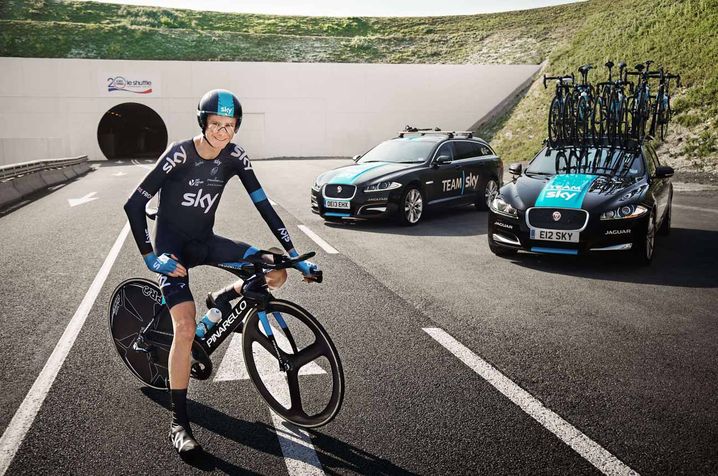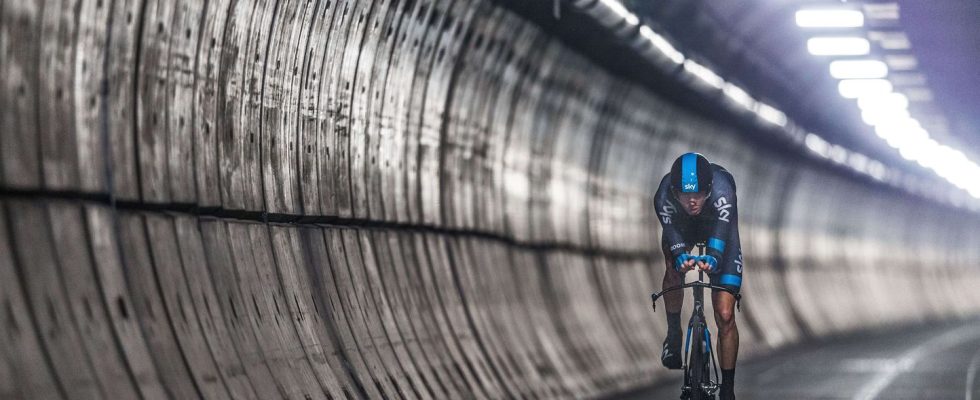On May 6, 1994, the French President, François Mitterrand, and the Queen of England, Elizabeth II, officially inaugurated the Channel Tunnel. A unique work in the world at the time, and which accumulated superlatives after having long fueled criticism, in particular because of its exorbitant cost.
Thirty years and 500 million passengers later, Eurotunnel (today GetLink) has seen its history peppered with success and small stories. It is the latter that interests us.
By car, by bike and by running
If the rail shuttle is the most used means of crossing the tunnel, other vehicles have traveled the 50 km of concrete under the sea. Thus, in November 2009, the former British Formula 1 champion John Surtees was the first to drive a car from one end of the tunnel to the other. At 75, he drove a prototype English sports car, a Ginetta G50 EV, as part of a charity operation. Ironically, the former F1 driver took more than an hour to cross the Channel, limited to a speed of 50 km/h.
For his part, it was in fifty-five minutes that the cycling champion Chris Froome, then the last winner of the Tour de France, will take to cycle through the tunnel in July 2014. A spectacular misstep while he was at the same time participating in the Grande Boucle and was 5th in the general classification.

In 2014 and then in 2019, the tunnel operator gave its employees a favor by organizing a cross-Channel marathon. Five years ago, on the occasion of Eurotunnel’s 25th anniversary, 94 people set off into the service tunnel to reach England in short strides.
The castaways of the tunnel
In thirty years, there have inevitably been problems, particularly for passengers. Like this August 4, 2010, when around twenty travelers were simply forgotten by the tunnel staff. As they arrived in Calais from Folkestone, no one came to open the door of their shuttle and the train went in the other direction. It was only back on the English side that Eurotunnel staff realized their blunder and sent the 20 passengers back to Calais.
In the winter of 2009, the experience was less fun for approximately 2,000 travelers. Due to the cold and snow, no less than five Eurostar trainsets remained stuck in and around the tunnel due to technical malfunctions.
Those who were stuck under the Channel had to evacuate their broken down train and use the service tunnel to finally be put on a working train.
The migrant question
Before being equipped with impassable fences, the Eurotunnel terminal in Coquelles (Pas-de-Calais) was regularly infiltrated by migrants wishing to reach Great Britain. On October 3, 2015, in the middle of the night, 113 people were able to enter the terminal of Coquelles by forcing a fence. Taking security by surprise, they managed to enter the tunnel and travel around fifteen kilometers before being intercepted by the police.

The beautiful story had taken place two months earlier. One night in August, 40 year old Sudanese had infiltrated the terminal alone. Without being detected, he was able to cross the entrance to the tunnel and begin a long walk towards England. He was finally arrested on the English side, near the tunnel exit. Indicted for “obstructing traffic in the tunnel”, this Sudanese nevertheless obtained his refugee status, then asylum a year later.
The astonishing discoveries of customs
It’s still crazy what some people try to smuggle through the tunnel. In 2007, customs agents intercepted two British antique dealers who had hidden a dead and stuffed tiger in their van.
In 2013, customs officers discovered live animals. Not less than 80 atypical animals illegally imported by traffickers: there were in particular caimans, pythons, hedgehogs and other “NAC”.
But it was in April 2019 that customs officers made the most destabilizing discovery when they checked a heavy goods vehicle driven by two Polish drivers. In the trailer, a shipment of new coffins bound for Great Britain. Except that in one of the coffins, the two Poles had placed an Iraqi migrant whom they were trying to smuggle.

